Southwest Michigan field crops update – June 30, 2022
Crops in non-irrigated fields are showing signs of water stress with average rainfall totals across south-central and southwest Michigan of only a quarter of an inch in the past two weeks.

Weather
Temperatures this past week were normal on average for this time of year. We picked up 175 growing degree days (GDD, base 40 for alfalfa) or 110 GDD50 (for corn and soybean) this past week, and we are still 60-90 GDD50 ahead in our region. The forecasted reference evapotranspiration (FRET) rate will be slightly above normal this coming week at ~1.6 inches with daily rates of around 0.2 inch. The forecast predicts the addition of another 210 GDD40 or 140 GDD50 in the coming week. Both the 6-10 day and 8-14 day outlooks show a strong confidence in above-normal temperatures for the first half of July.

Precipitation this past week was very low for the second week running with most areas receiving less than 0.25 inch. The month of June was dry overall with much of the region having received up to 50% less rain than normal, save the band that was blessed with a couple of rounds of rain in the first half of the month. The next chance of rain comes on Friday as a cold front moves through the state although amounts are predicted to be only one to two tenths. With the troughing upper air feature over Michigan, we will have more chances of rain next week although totals for our region will likely be less than 0.75 inch. The medium-range outlooks call for slightly greater than normal chances for rainfall in the first half of July.

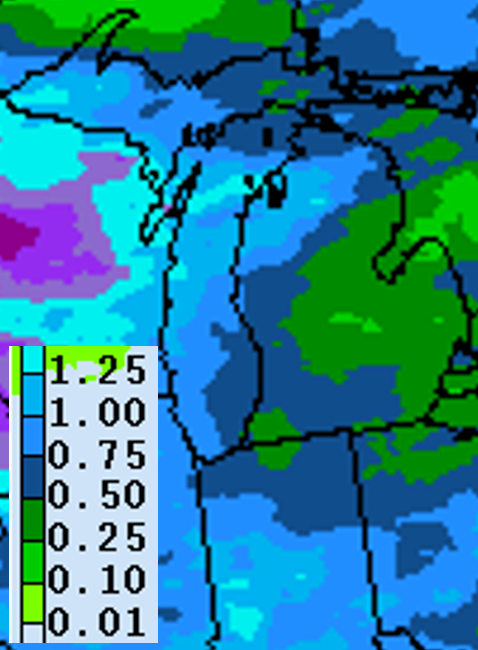

Crops and pests
Wheat is approaching the hard dough stage (Feekes 11.3, kernel hard but dividable with thumbnail) and with the return to normal warm temperatures for early July, fields should reach physiological maturity (Feekes 11.4) by the end of next week.
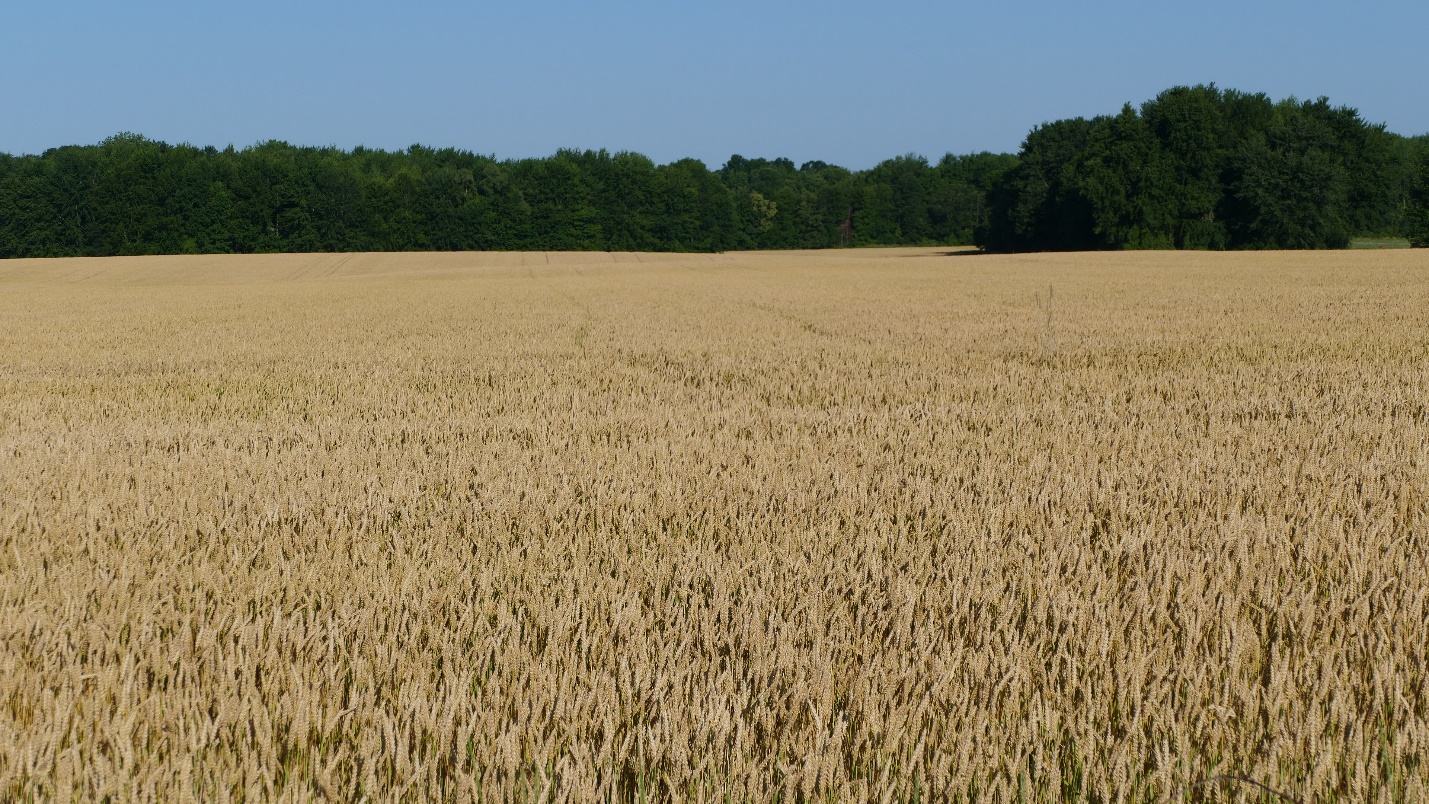
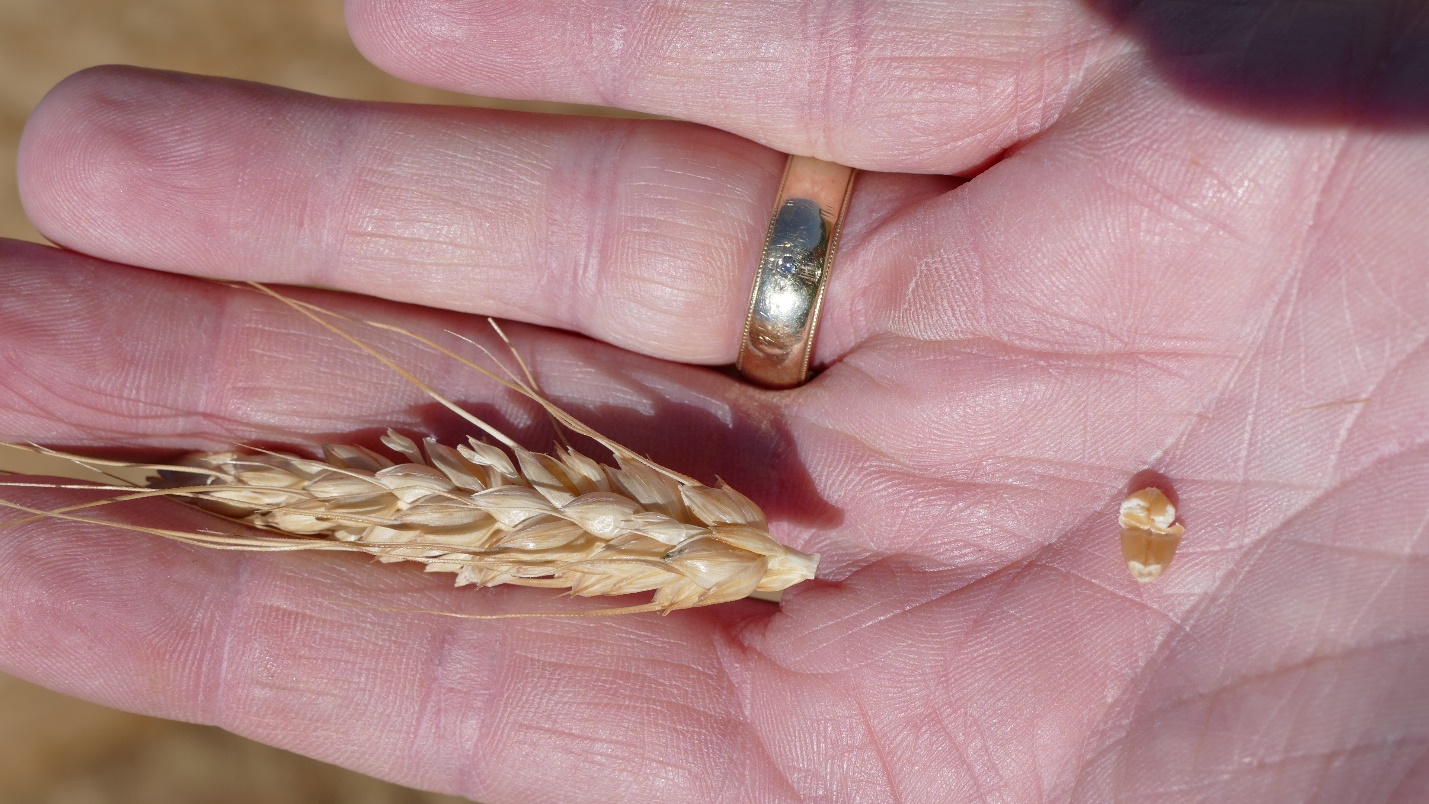
Forages. Second cutting of alfalfa is underway in the region as farmers are taking advantage of the dry conditions. Leafhopper has not been an issue yet, but the next couple of weeks is typically when this pest begins attacking alfalfa in our region.
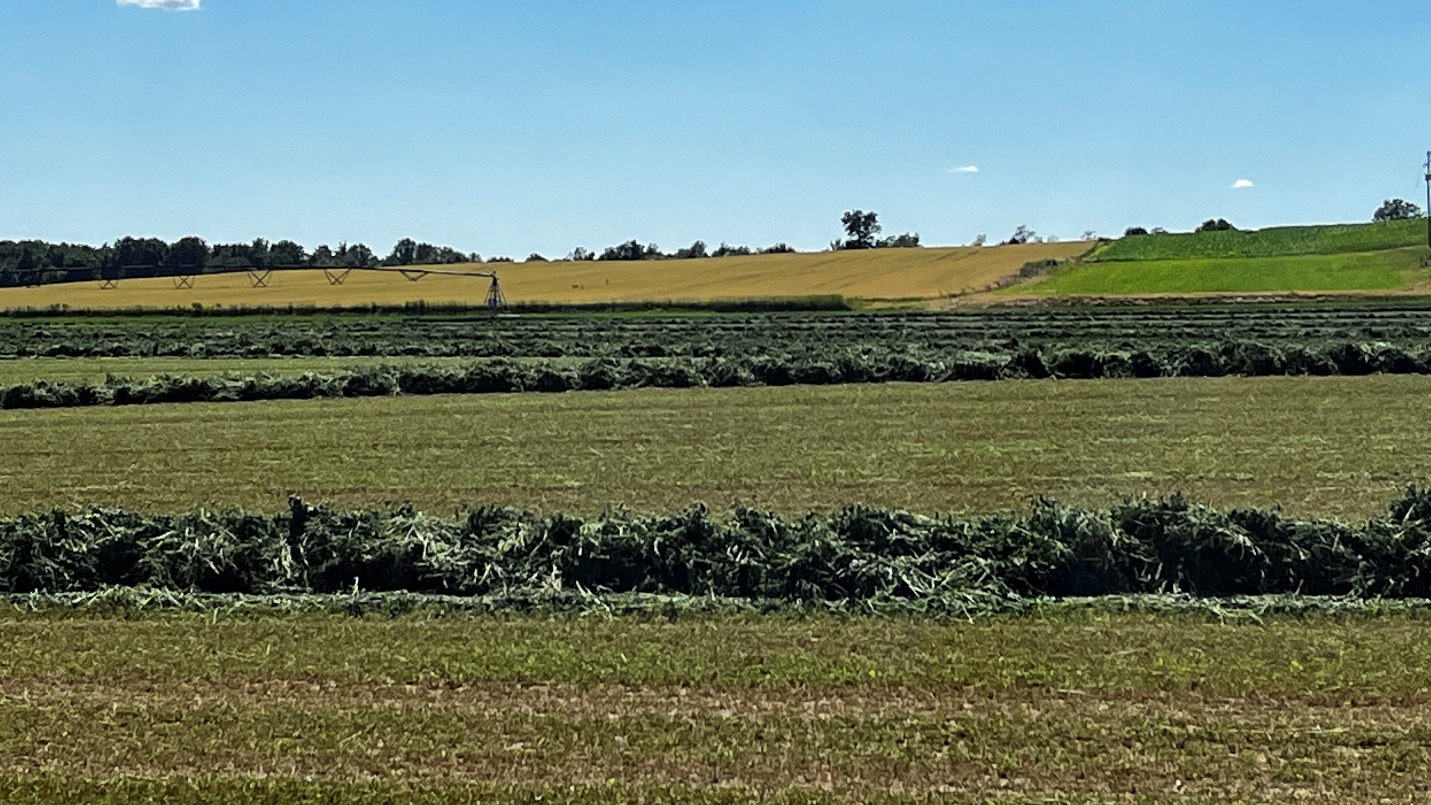
Corn and soybean plantings were doing well last week with statewide ratings of roughly two-thirds of the crop rated good to excellent at the end of last week. However, with the continued dryness in the region, crops—corn in particular—are showing signs of water stress as leaves roll in dry corners of irrigated fields and in many dryland fields.
Soybean has reached V6-V7 in many fields but only 5% of fields in the state have reached flowering. However, one field visited with a short-season variety (MG 2.1 planted April 30) has already reached R2 (full flower with at least one flower at the top two nodes on the main stem).
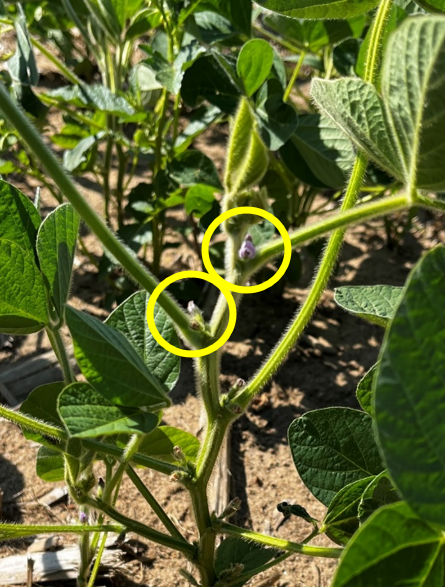
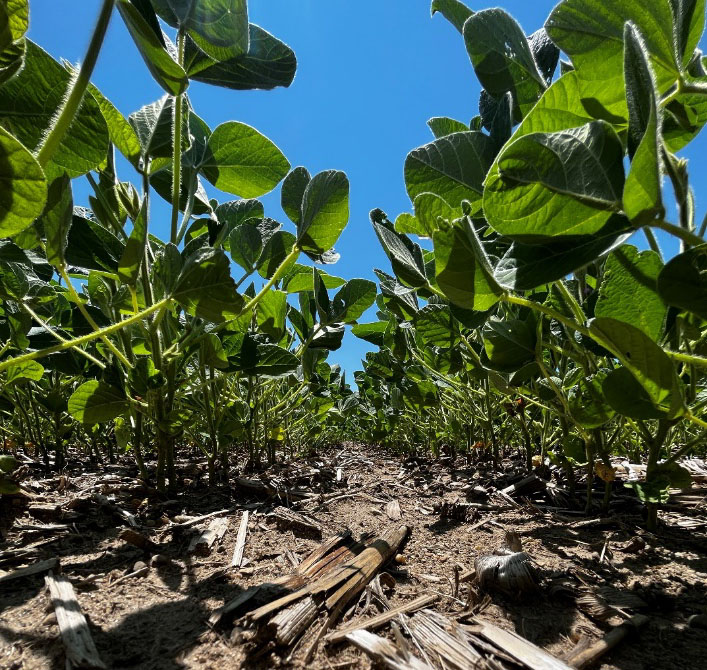
Insects. No major insect problems have been reported yet although minor bean leaf beetle and Japanese beetle feeding have been spotted. This is not typically yield-limiting in soybean at this stage, and even during the critical bloom to pod stages, soybean can tolerate 15-25% defoliation according to Purdue Extension.
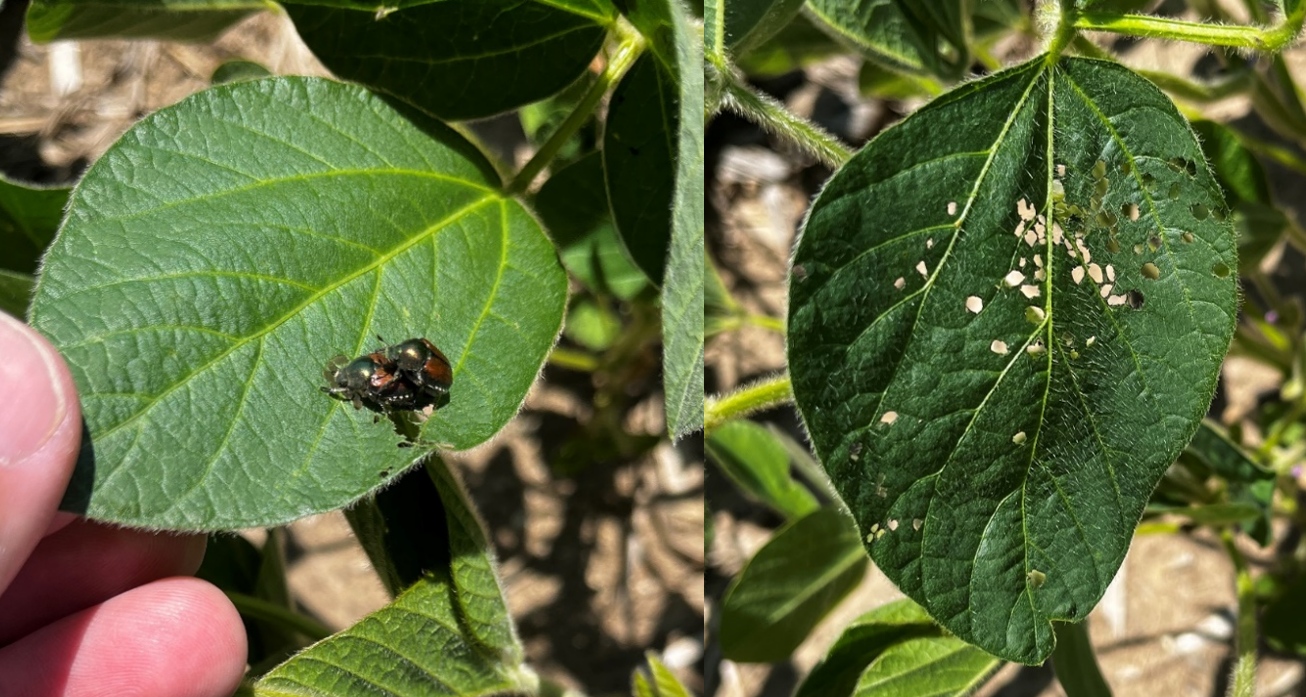
Moth traps for western bean cutworm (WBC) and fall armyworm (FAW) were set this week in three counties in our region, and I will be monitoring trap counts and reporting those in subsequent crop reports. Since this is the first year I’ve trapped for FAW, we’ll have to see when (or if) this species shows up in force in our region—hopefully nothing like last year. Peak flight for WBC is typically later in July.
According to the Purdue Extension entomologists, “Those in high-risk areas, i.e., sandy soils, high moth flight and western bean cutworm history, should be gearing up for field scouting of corn, even those with Bt-traits. Remember that WBC larvae are no longer susceptible to most of the Bt traits in our corn hybrids (including those in SmartStax hybrids) and therefore scouting, followed by timely insecticide sprays are really the only reliable control option for the vast majority of producers in the zone where this insect is common. This is principally the northern tier of counties in Indiana, extending into Michigan and parts of Ohio. Only Bt hybrids expressing the Vip3a toxin will offer reliable control of this pest, so be sure to know what you have in your field and scout as needed. See this handy Bt Trait Table to check where your hybrids fit in terms of the pests managed.”
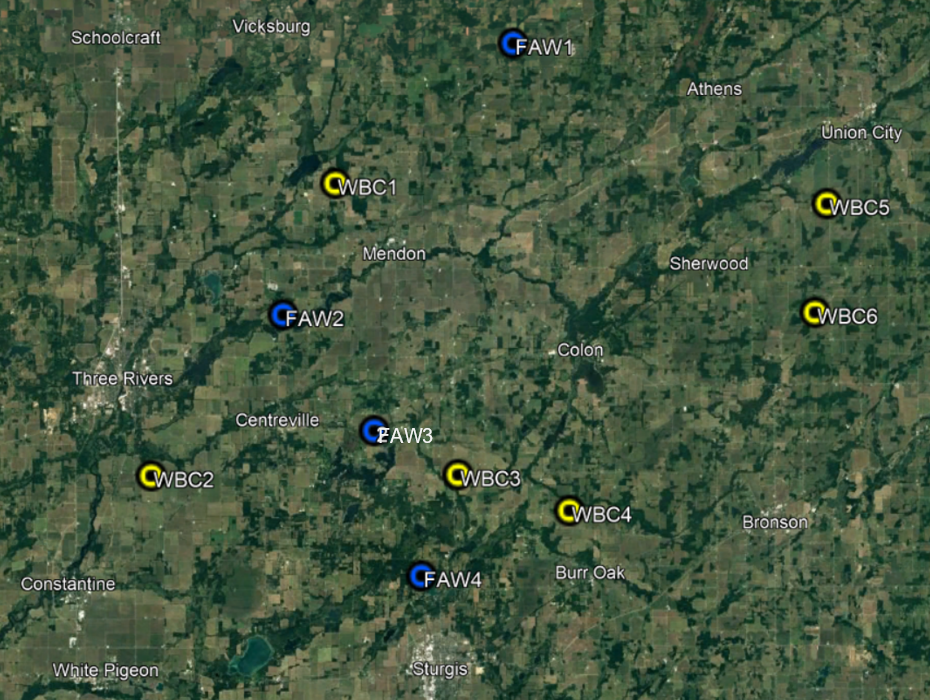
MSU field crop entomologist Chris DiFonzo recently released another edition of her Fast Fonz Facts.
Texas “mothpocalypse”: Huge “off-the-charts” flights of fall armyworm were reported this week by my colleague Pat Porter at Texas A&M. The moth flight in Lubbock TX in mid-May was 6 times the 11-year average for that date, and the flight of the following generation, measured on June 22, was similarly elevated.
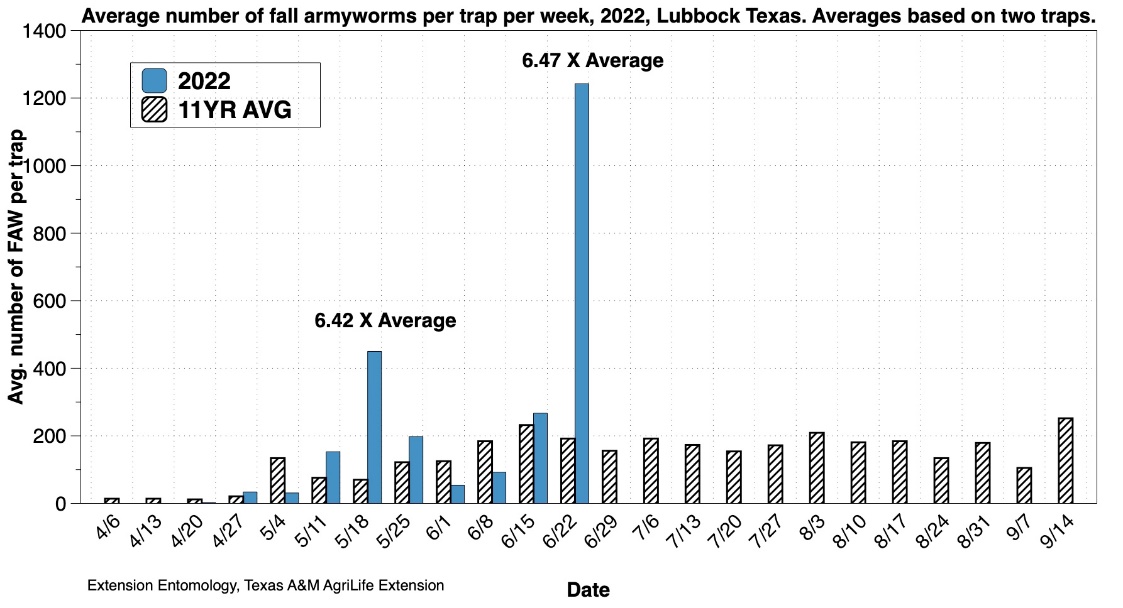
Will this impact Michigan? Not yet, and maybe not at all. Fall armyworm is a tropical pest that rarely makes it north to Michigan by the end of the season. But you might recall that last year, FAW populations were high in the mid-southern states and by the end of the season, moths were carried on favorable winds into Indiana, Ohio, and Michigan. And with the warm extended fall, there were infestation of FAW caterpillars in alfalfa, cover crops, and turf in Ohio, Indiana and other northern states. So take this message as an alert (vs an alarm) to watch for FAW in August.
I typically don’t trap for fall armyworm, but this season I am setting up bucket traps in the next few weeks. Ohio State is doing the same. I will report numbers on the Great Lakes moth monitoring site (https://arcg.is/0Lry5a). If you are interested in trapping, be sure to use the specific lure labeled “FAW”. DO NOT use the lure for regular armyworm (True Armyworm or AMW) which is a different species. Lures and bucket traps are available from Great Lakes IPM in Vestaburg.
Other insects on corn:
Asiatic garden beetle adults have emerged in northern Ohio, and grubs are pupating in southern Michigan. Thus, AGB larval injury is done for 2022. MSU and OSU have been sampling multiple infesting field sites this spring, and we hope to have additional information about soil insecticides and grub injury for winter meetings.
Western bean cutworm moths will start emerging by mid-July. If you trap, hang your buckets at least by the week of July 4th. Trap catches from hundreds of locations in the Midwest will be posted on the Great Lakes monitoring web site. Remember, trapping doesn’t tell you when to spray. It gives you an idea of flight intensity and helps to time scouting for egg masses, i.e. when trap catch peaks. Infestations are hard to predict because egg laying is usually tied to crop stage (pre-tassel), thus each field can be different depending on how stage lined up with flight.
Corn rootworm hatch has started. If you follow this insect in continuous corn, look for root injury or lodging 4 weeks from now.
I’ve had zero calls about 1st generation corn borer. Onward to 2nd generation. Moth flight will occur in mid to late-July. Later-planted corn will be at more attractive for egg laying at that time.
Insects on soybeans
Soybean aphids are in fields by now, but populations usually don’t increase until mid-July. A note about late-planted or replanted beans: aphid populations are often higher in fields that were planted very late or double-cropped. Keep an eye on these fields in mid to late July for over-threshold populations.
Soybean gall midge. This is another case of Alert, not Alarm. Gall midge is in the ag press a lot, and people ask about it all the time. But it is NOT yet in Michigan or any state bordering Michigan. Gall midge was first discovered in Nebraska a few years ago. Its tiny maggoty larvae infest and weaken soy stems, causing lodging or stalk breakage. This usually happens in rows adjacent to last years’ soybean. As of June 22, Univ of Nebraska reported midge adults emerging in NE, IA, SD, and MN, and larvae in Nebraska fields. The good news is that gall midge is spreading very slowly and all evidence indicates it is still hundreds of miles west of Michigan. But weirder things have happened! So as you scout in July and August, keep your eyes open for lodging on field edges. If you see something odd, investigate. Collect plants. Send samples to the MSU diagnostic clinic. Call me, an extension agent, or trusted field scout, or send us pictures. This web site https://soybeangallmidge.org/ has pictures and a lot of info.
Irrigation
Evaporative demand and crop water use once again outpaced rainfall this past week. Corn at V12 will use roughly 1.6 inches of water this coming week while later-planted corn still at V6 will use only around 0.6 inch. Soybean that has reached R1 will also need 1.6 inches while beans at vegetative stages (not yet flowering) will use between 0.5-0.75 inch this week. According to Shawn Conley at the University of Wisconsin, “…Coarse sandy loams…simply cannot hold substantial water reserves, so withholding irrigation entirely until R3 isn’t typically advisable. Instead, consider setting your [soil moisture] deficit threshold somewhere between 50 and 75% without impacting your final seed yield.” We typically advise to minimize watering during flowering if possible to reduce the risk of white mold—the fungus Sclerotinia sclerotiorum attacks the flowers—so consider applying 0.75-1.0 inch of water to saturate the top foot of soil prior to R1.
Planting cover crops following wheat
Planting cover crops following wheat was the topic of this week’s MSU Extension Field Crops Virtual Breakfast with Brook Wilke, Associate Director of Agronomy for MSU’s Long-Term Agroecosystem Research (LTAR) Network at the Kellogg Biological Station. The three main reasons for planting cover crops following wheat include weed management, nitrogen fixation or scavenging, and for a variety of soil health considerations.
When designing a weed management strategy in this situation, it is advised to kill emerged weeds first and then plant a cover crop that will hopefully out-compete any weeds that emerge in late summer or fall. Wilke suggested that species such as oats and radish are good options as they will winterkill, although he advised against planting radish before August 1st to keep them from bolting prior to a killing frost. Mustards, rapeseeds and other brassicas won’t likely harbor diseases for the next crop, but rape may overwinter in Michigan so it would need to be controlled in the spring. Refer to the MSU Cover Crop Termination bulletin for recommendations. Sorghum sudan and other grasses would also be a good option; however, unless you plan to use sorghum sudan as a source of forage, choose non-forage seed varieties as they are less than half the cost. Wilke provided recommended seeding rates and typical costs per acre for several cover crop species. Seeding rates don’t need to be near the top of the recommended ranges for an effective cover. Wilke noted that all cover crops after wheat need to be either drilled in or broadcast and then lightly incorporated to get the seed into soil moisture during the heat of summer.
Another important function of cover crops following wheat is to scavenge leftover nitrogen (N) from the wheat crop or to generate N by planting a legume species such as clovers, hairy vetch, cowpeas, and even soybean. Red clover is often frost-seeded into wheat in late-winter but it can also be planted after wheat. As with sorghum sudan, choose a non-forage variety for lower seed cost if not using the clover for forage. Hairy vetch has “hard” seed which means that some of it will not germinate until after a winter freeze, so expect some degree of carryover of vetch coming up in subsequent years.
One question many growers ask is how much of a N credit can you expect for the following crop. This is difficult to estimate as it depends on several factors such as what species were planted and at what density, how much biomass accumulated, what termination method is used, etc. Tillage will release the N faster than when using a burndown herbicide application. One study by Sullivan et al. (2020) found that up to 100 lbs of plant-available N per acre can be generated from leguminous cover crops, although Wilke suggested 50-75 lbs as a more realistic estimate. To better estimate the N credit in your situation, he recommends conducting a replicated N fertilizer rate trial on your farm to see how much N you can short your corn crop following the legume cover crop without a yield impact.
If you were not able to join the session, the recordings will be closed-captioned and available at the Field Crops Virtual Breakfast webpage and the MSU Extension Field Crops Team social media platforms: Facebook, Spotify, YouTube, Apple Podcasts and Twitter.



 Print
Print Email
Email




